Black Book vs Edmunds vs KBB: Used Car Pricing Guide
January 30, 2024
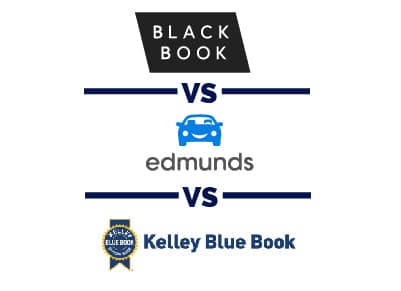

I am a serial entrepreneur and a consumer advocate. When I’m not helping car buyers, I love working on ventures that have a positive impact.
I run a cause marketing agency and serve on the board of Vayu Global Health where we are disrupting the medical industry and preventing the needless deaths of mothers and babies during childbirth.
Navigating the maze of used car pricing can feel overwhelming, can't it? Each car has its own unique story, making it tricky to figure out the right price.
That's where Black Book, Edmunds, and Kelley Blue Book come into play.
These guides are your personal car valuation experts, and each one has their own method to pinpoint what a car's worth, or what you should be shelling out for one.
But here's the million-dollar question: which one of these is your go-to guide? This guide walks you through how to find out, so you can make your next car deal with confidence.
Key Takeaways
- Black Book: Known for its detailed and current wholesale pricing, heavily utilized by automotive professionals for accurate vehicle valuation.
- Edmunds: Offers a user-friendly interface and comprehensive assessment tools for individual car buyers and sellers.
- Kelley Blue Book (KBB): Widely recognized for trusted and reliable trade-in estimates and selling prices for used cars, appealing to a broad audience.
Table of Contents
- Black Book vs. Edmunds vs. Kelley Blue Book Comparison
- What Is Black Book?
- What Is Edmunds True Car Value?
- What Is Kelly Blue Book Value?
- Pricing Comparison
- Ease of Use Comparison
- Trade-In Value Comparison
- Black Book vs. Edmunds vs. Kelley Blue Book: Which One Should I Use?
- Conclusion
- Frequently Asked Questions
Black Book vs. Edmunds vs. Kelley Blue Book Comparison
| Black Book | Edmunds | Kelley Blue Book | |
| Pricing | |||
| Best for | |||
| Types of Vehicles Appraised | |||
| What Information is Required? | |||
| Platforms | |||
| Types of Values | |||
| Trade-In Amount | (Most Accurate) | ||
| Appraisal Offer |
What Is Black Book?
 Started in 1955 as a weekly car value report, Black Book is now one of the top resources dealers use to assess the value of a trade-in or used car. Black Book requires a paid subscription to access over the web or mobile device. They aim to help dealerships make smarter business decisions, and they are a resource used by dealers (not typically car buyers/consumers). However, a free version is available that allows you to enter a few details about the model to get just the trade-in value.
Started in 1955 as a weekly car value report, Black Book is now one of the top resources dealers use to assess the value of a trade-in or used car. Black Book requires a paid subscription to access over the web or mobile device. They aim to help dealerships make smarter business decisions, and they are a resource used by dealers (not typically car buyers/consumers). However, a free version is available that allows you to enter a few details about the model to get just the trade-in value.
How Is Black Book Value Determined?
To determine vehicle value, Black Book assesses several factors. Black Book analyzes vehicle transactions and integrates vehicle history reports from AutoCheck. Based on the vehicle history report, their unique model gives a History Adjusted Valuation. According to Black Book, they leverage data from many sources. They adjust the value based on mileage, optional equipment, region/state, and more.
Using this valuation model, Black Book will flag vehicles for review and price vehicles for retail sale. They share an example of how they leverage vehicle history and market data to determine vehicle value.
- Vehicle 1: One owner, no accidents, 42,000 miles. [Worth +$350]
- Vehicle 2: Three owners, minor accident, 42,000 miles. [Worth -$1,750]
Black Book determines a value for a wide array of vehicles, including light-duty cars, SUVs, and trucks, medium/heavy-duty trucks, powersports, collectible cars, and RVs.

Black Book Used Car Values
Black Book provides conditions for:
- Wholesale Value: extra clean, clean, average, and rough (Paid)
- Trade-In Value: clean, average, rough (Free)
- Retail Value: extra clean, clean, average, and rough (Paid)
They do not provide descriptions of these conditions on the free portion of their website.
What Is Edmunds True Car Value?
 Edmunds is a website that seeks to improve the car-buying process by helping consumers view and compare car prices. They have many tools to help the car-buying process, but they can also help car sellers. Edmunds offers a free appraisal tool to provide you with an estimated price for your vehicle.
Edmunds is a website that seeks to improve the car-buying process by helping consumers view and compare car prices. They have many tools to help the car-buying process, but they can also help car sellers. Edmunds offers a free appraisal tool to provide you with an estimated price for your vehicle.
How Is Edmunds Car Value Determined?
Using the Edmunds appraisal calculator to find the value of your car is fairly easy. You won’t even need to submit personal information. To use the calculator, follow these steps:
- Enter the license plate number or VIN
- Answer questions about the vehicle’s condition and details
- Generate and view your appraisal in seconds
Edmunds uses data from several sources, including consumers, dealer transactions, and car depreciation costs to assess a vehicle’s value. They also take into account multiple factors, including:
- Make
- Model
- Trim
- Depreciation
- Features
- Year
- Vehicle history
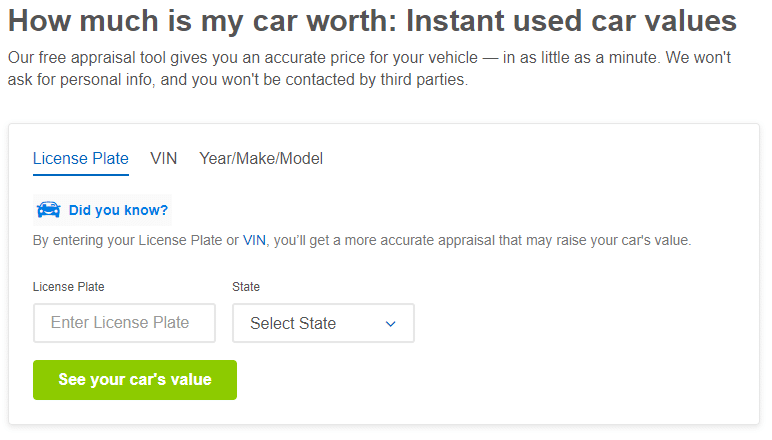
- Outstanding: Low-mileage vehicles that are preserved well. Exceptional condition. No reconditioning is needed. Glossy paint and no damage. Nearly-new tires. Clean title and passes emissions. Very few vehicles qualify for this condition.
- Clean: Normal wear, but no major cosmetic or mechanical issues. Glossy paint but may contain a couple of nicks. Minor reconditioning may be needed. The tires still have significant tread. All repairs are done with factory parts and according to the manufacturer’s specifications. Clean title and can pass an emissions inspection.
- Average: Requires significant reconditioning and may include cosmetic or mechanical issues. Dull exterior paint with several dings or scratches. Worn interior. Tires with usable tread. Clean title and can pass emissions.
- Rough: Requires significant repairs for many cosmetic or mechanical problems. Interior and exterior need repairs. Tires may need replacement. Can pass emissions with minor repairs, still has a clean title.
- Damaged: Major body and mechanical damage. It may not be in running condition. May have a branded title (flooded, salvaged, damaged, etc.) and may need significant repair to pass emissions.
The car value tool appraises nearly every make of vehicle. You can use it to search the value of luxury brands as well. However, the tool will only appraise vehicles from as late as 1990, so it will not work for classic cars.
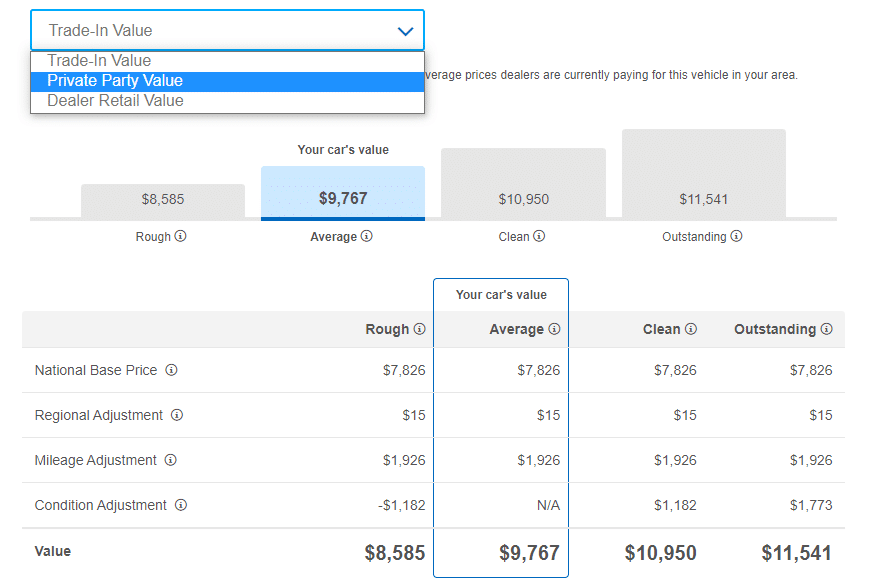
Edmunds Used Car Values
The Edmunds appraisal calculator provides you with these four values:
- Trade-In Price: A reasonable dealership offers to trade in your current vehicle for your next car. This value is always the lowest.
- Private Party: What you can expect to get as a seller if you sell privately.
- Dealer Retail: What used car customers can expect to pay at a dealer.
- Certified Used: This only applies to new enough vehicles if your vehicle could be sold as a certified pre-owned by a dealer.
What Is Kelly Blue Book Value?
 Kelly Blue Book began in the 1920s with a real “blue book” that dealerships referenced for car pricing. Autotrader acquired Kelley Blue Book in 2012 and is now an auto shopping website. You can search for car pricing information and vehicle appraisals as a buyer or seller.
Kelly Blue Book began in the 1920s with a real “blue book” that dealerships referenced for car pricing. Autotrader acquired Kelley Blue Book in 2012 and is now an auto shopping website. You can search for car pricing information and vehicle appraisals as a buyer or seller.
How Is KBB Value Determined?
To determine the KBB value of your vehicle, the program analyzes historical trends, pricing data, and the current economy. They also factor in the time of the year and location to determine the value of a used car.
KBB gathers basic new vehicle information about cars every day. Additionally, they evaluate wholesale auctions, independent dealers, and consumer sale prices.
Using KBB value is simple. To do so, you simply:
- Go to the website homepage
- Select “Car Values” and then “My Car’s Value” from the top navigation.
- Enter the make, model, year, and mileage. Verify your zip code.
- Select the car category and style.
- Add any additional options.
- Choose the condition of the car. KBB provides descriptions of each, but they state most cars are in good condition.
- View the Blue Book for your car.

KBB Used Car Values
The KBB used car values fall under these categories:
- Private-Party Value: How much the used car is worth from a private seller.
- Trade-In Value: The amount you can expect to get when trading in the vehicle at a dealer.
- Suggested Retail Value: The price dealers usually ask for the used car.
- Certified Pre-Owned: How much the car is worth as part of the CPO program (only applies to certain newer vehicles).
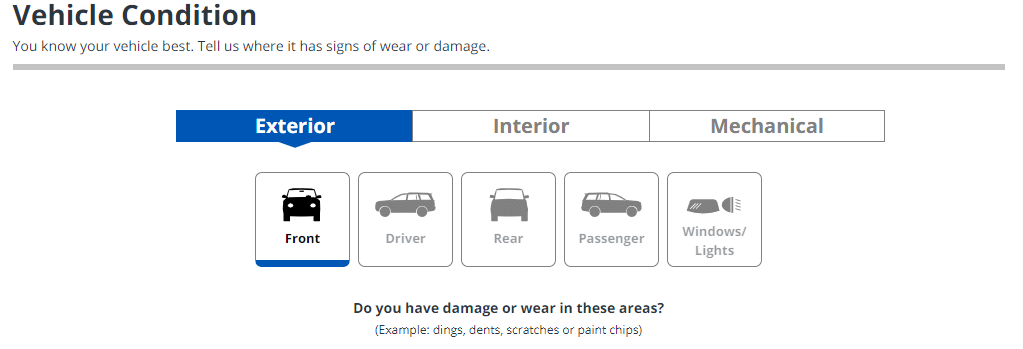
Pricing Comparison
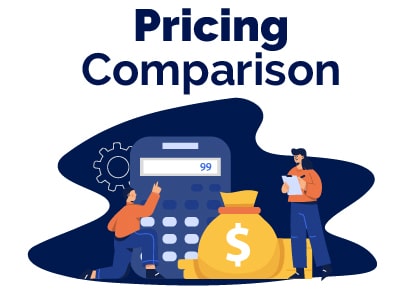 Black Book: Black Book offers print, online, and mobile subscriptions. It is free to get your trade-in value, but requires a paid subscription to get more pricing values and to be able to search by VIN or license plate. The subscriptions begin at $65 per month (above $700 annually). Subscriptions are mainly geared towards dealerships.
Black Book: Black Book offers print, online, and mobile subscriptions. It is free to get your trade-in value, but requires a paid subscription to get more pricing values and to be able to search by VIN or license plate. The subscriptions begin at $65 per month (above $700 annually). Subscriptions are mainly geared towards dealerships.- Edmunds: Edmunds used car vehicle appraisal calculator is free to use.
- Kelley Blue Book: Kelley Blue Book provides a free used car value estimator.
Ease of Use Comparison
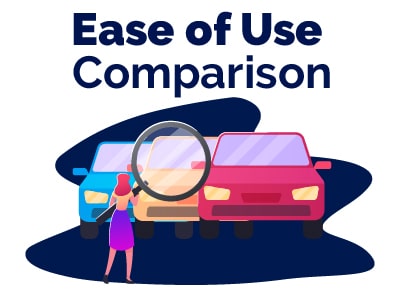 Black Book: The free service is very simple, but contact info is required to see the trade-in value. The Black Book subscription service makes it inherently more difficult to use. Users cannot just quickly enter their vehicle information; they must sign up and pay for an account. The free service does not allow you to search by VIN or license plate.
Black Book: The free service is very simple, but contact info is required to see the trade-in value. The Black Book subscription service makes it inherently more difficult to use. Users cannot just quickly enter their vehicle information; they must sign up and pay for an account. The free service does not allow you to search by VIN or license plate.- Edmunds: Similar to KBB, users can enter car details through an online calculator. Edmunds also allows you to search for a model by VIN or license plate. Since both Edmunds and KBB are very easy to use, it’s often worth using both to generate used car appraisals.
- Kelley Blue Book: Users can enter details about their vehicle to receive an estimated value for several scenarios (trade-in, private sale, etc.). KBB allows users to search by VIN or license plate.
Trade-In Value Comparison
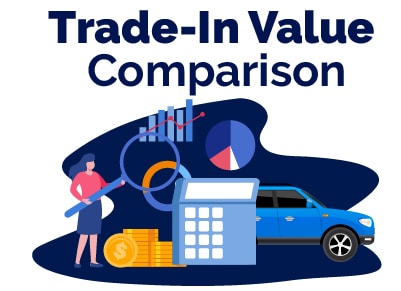 Black Book: Since the Black Book is a tool designed for dealers, it tracks wholesale prices and will often show lower values than KBB or Edmunds.
Black Book: Since the Black Book is a tool designed for dealers, it tracks wholesale prices and will often show lower values than KBB or Edmunds.- Edmunds: Edmunds’s trade-in values may differ slightly due to different algorithms, but they tend to be higher than Black Book trade-in values.
- Kelley Blue Book: More similar to Edmunds, values tend to be higher than Black Book.
Most dealers use the Black Book, so although the trade-in value may be lower, it may more accurately represent the offers you’ll get from a dealer.
Black Book vs. Edmunds vs. Kelley Blue Book: Which One Should I Use?
If you're looking for an easy process...
Since most of the Black Book features require signing up for a subscription, it is not the easiest tool to use. Edmunds has a streamlined process and shows the most amount of information about your car's value. You can also sign up for monthly updates and an appraisal report. Both Edmunds and KBB are free and easy to use.

If you're looking for the most accurate...
The Black Book is the most accurate, as it provides premium subscription content While this makes it the best choice for many dealers, the subscription cost may not be worth it for consumers.

To get the most accurate estimate, you should use both KBB and Edmunds. It is fast, easy, and free to enter your vehicle’s information on both sites and to average the values given.
Conclusion
And there you have it – a roadmap through the world of car valuations. Whether you lean towards the detailed insights of Black Book, the user-friendly approach of Edmunds, or the trusted evaluations of Kelley Blue Book, you're now equipped to make an informed choice. Remember, the right tool can turn the daunting task of pricing a used car into a smooth ride.
Eager for more tips and tricks in the car buying and selling journey? Why not stay in the loop? Sign up for our newsletter at FTBCP and keep cruising ahead with the latest insights and offers in the car world. Your next great car deal might just be an email away!
Frequently Asked Questions
What’s the difference between Black Book and Blue Book?
A Blue Book and Black Book are both used for car value and pricing information. The Blue Book is geared toward buyers/consumers, whereas the Black Book is a paid, subscription-based service offering wholesale prices geared towards helping dealers make wise business decisions.
Is Black Book or Edmunds more accurate?
Edmunds tends to be very accurate when buying or selling from an individual, but it may overestimate what you can get when trading in. Dealerships commonly use the Black Book, so it may provide a more accurate insight as to what you can expect when dealing with a dealership.
What book value do car dealers use?
Dealers rely most on the Black Book. The Black Book provides more specific valuations and it’s dealer-drive. It shares pricing deals with wholesale values. Therefore, dealers will use the Black Book when considering their offers and prices.
Should I pay more than Blue Book value?
Ideally, you do not want to pay significantly more than the Blue Book value. However, many factors can influence the actual price of a vehicle. The Blue Book sites, like KBB and Edmunds, are free to use. While they leverage several sources of data to provide price estimates, their estimates may lag behind local or industry changes.
How can I check the value of my car?
You can easily check the value of your car online for free using KBB or Edmunds. Simply head to the website and input your car’s details. The more accurate information you provide, the more accurate estimate you can expect.
Who offers the highest trade-in value?
Both Edmunds and KBB may suffer from lag time and consumer bias that lead to higher trade-in values. The Black Book is the most-used dealer resource, and it tends to display lower trade-in values. Therefore, just because KBB or Edmunds displays a certain trade-in value, it does not mean you will get that high of an offer from a dealer.
What is NADA?
NADA stands for National Automobile Dealers Association trade group. Their algorithm requires trade-ins to be in extremely “clean condition”, and thus the price estimates tend to be higher.
Posted in Car Buying Tips, Car Trade-In & Sell |

